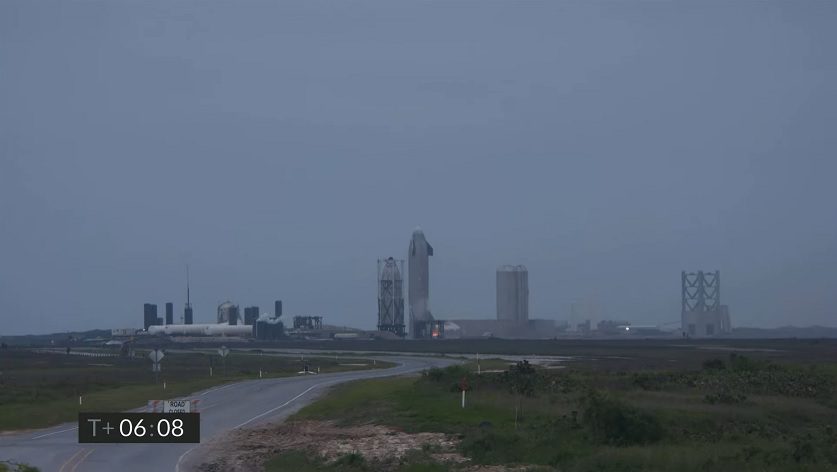Following four failed attempts to land previous versions of the Starship launch vehicle, SpaceX finally succeeded in landing its latest prototype, SN15, on 5 May after a six-minute test flight. As the dust cleared from the landing pad at the Boca Chica facility in Texas, it was clear that Elon Musk’s latest space venture was one step closer to nailing a key part of its mission – vehicle reusability.

The SN-15 Starship sitting on the pad after completing its landing manoeuvre. Courtesy of SpaceX via YouTube
The three methane-fuelled Raptor engines boosted the vehicle (serial number 15) to a target altitude of about 10 km and it landed using the thrust of two engines, as intended. The four previous attempts at high-altitude flight (SN8 in December 2020; SN9 this February; and SN10 and 11 in March) were only partially successful, being notable mainly for the fireballs they created in attempting to land. The success of SN15, by contrast, raises expectations for future tests and augurs well for the vehicle’s eventual introduction to service.
In April, for example, NASA announced that it had chosen SpaceX to supply a lunar lander for its Artemis mission based on the Starship concept, but competing contractors Blue Origin and Dynetics are disputing the decision.
According to SpaceX, SN15 had “vehicle improvements across structures, avionics and software” and a new Raptor engine design specified for “more speed and efficiency”. This is in line with the company’s philosophy, which allows the system to fail and expects the team to learn from the mistakes. SpaceX CEO Elon Musk tweeted after the successful flight: “Starship landing nominal!” but did not reveal whether SN15 would fly again.
A new prototype, SN16, is reportedly nearing completion at Boca Chica. Although the US Federal Aviation Administration (FAA) has pre-approved the next three Starship launches, it is not clear when SN16 will begin its launch campaign.





